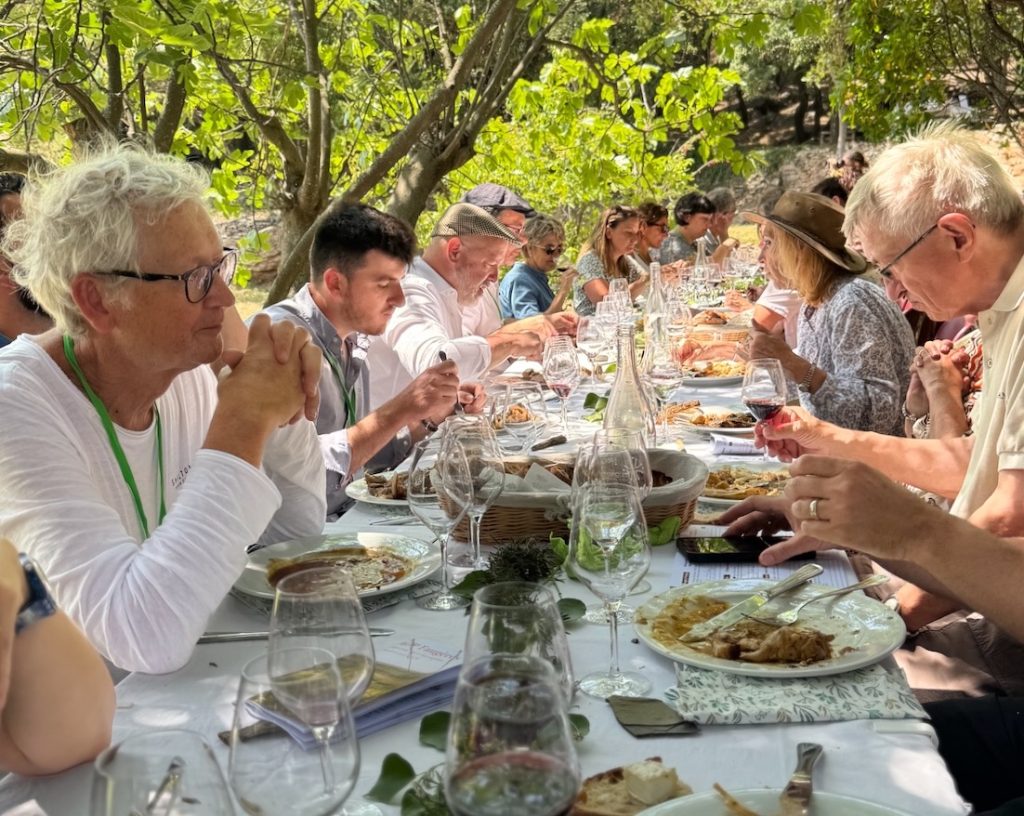This month Meg Maker examines whether a wine communicator can ever really be objectively critical.
I enjoy reading criticism of books, art, cinema, and architecture. As a writer who does some wine criticism, I find it instructive to see how critics from other domains approach the exercise.
I was particularly struck by a recent New Yorker piece, an essay by Julian Lucas reflecting on the critic Hilton Als’s profile of author Derek Walcott. That’s meta, I know: a critic reviewing a critic writing about an author. But the piece was part of The New Yorker’s 100-year anniversary series called Takes, where a present-day commentator provides a fresh “take” on material from the archives, usually a profile of a person, place, or thing.
Lucas was ruminating on the approach Als had taken in profiling this famous but also complicated author. Als could have written a “moralizing takedown,” Lucas noted, or alternatively penned a “dutiful hagiography.” Instead, “Als simply arrived on the beach—sunglasses and folding chair in hand—and set out to discover how such an imperfect man wrote such extraordinary work.”
It was that phrase, “dutiful hagiography,” that reached out from the page and grabbed my collar. Because who among us has not read such a profile of a winemaker, or even of a particular wine itself, in the pages of a contemporary wine magazine?
Wine is an experience good, demanding both subjective and objective evaluation. It’s also an inherently social product, and so the wine industry is likewise social and small enough that relationships among its dramatis personae, producers and writers alike, create propulsive force. Our work repeatedly invites us to confront a key question of criticism: Is it possible to be objective about a subject when the subject is people, especially people you know and like?
On the whole, writers tend to respect producers and the work required to place an aesthetic product into the hands (glasses) of the market. We are, generally, polite; you will rarely see a “moralizing takedown” in a magazine except in the rare instances of a deep transgression: worker abuse, fraud, environmental demolition.
Some wines are indeed iconic (some vineyards and territories, too), their goodness agreed upon by generational consensus. Some people are likewise icons, their reputations formed from a collage of commentary about their life’s work. We respect the tiny climat for what it is. We respect the grande dame for what she does. There is irrefutable proof of their overall excellence, despite a few quibbles over foibles.
But the reader isn’t served by a “dutiful hagiography,” even of these enduring characters. Our work is to interpret and contextualize rather than lionize. Not that we need to muckrake as a matter of policy, but we do need to research and write with circumspection, to question received wisdom, to visit and taste for ourselves, to talk not only with the principal but also with the cellar hand, to pull up our “sunglasses and folding chair” and watch for a while to see how the work gets done.
A wine may deliver epiphanies or may simply be banal, but our job is to understand how and why, so we may arm readers with insights before they taste for themselves.
Photo: Circle members and other journalists at lunch with producers in Faugères. Credit: Meg Maker

